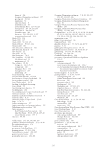Lake Eyre Basin Rivers 6 roast it to remove the damaging enzyme ‘thiaminase’, which contributed to their demise. Misreading these landscapes, Charles Sturt, a successful explorer of the continent’s Murray– Darling Basin rivers, underestimated the size and importance of Cooper Creek, naming it a creek in 1845, presumably unconvinced that it was sufficiently large to be called a river. Two rivers (the Barcoo and the Thomson) flow into the Cooper, which can flood across up to 80 km of floodplain – clearly a substantial river. Colonisation was sometimes brutal to Aboriginal people in many parts of Australia, including the Lake Eyre Basin (see Chapter 9). Large grazing properties were established as the settlers and cameleers moved in (Lockyer 2012). This included the legendary Sidney Kidman who built an empire of large pastoral properties across inland Australia. To this day, pastoral land management for cattle and sheep remains the most widespread commercial activity across the Lake Eyre Basin. In contrast, there are a few – and relatively small – areas established for irrigated agriculture (see Chapter 20). The other major economic activity is the mining of minerals, oil and gas (see Chapter 19. Tourism is also rapidly increasing in importance, particularly because of its contribution to economic viability in the more remote parts of the Basin (see Chapter 13). All people and their industries are supported by large regional centres, such as Longreach and Alice Springs, as well as some iconic smaller towns Fig. 1.4. Memorial to Robert O’Hara Burke, who died on Cooper Creek on 28 June 1861. He was the leader of the ill-fated Burke and Wills expedition to northern Australia (photo, R. T. Kingsford).
Downloaded from CSIRO with access from at 216.73.216.28 on Nov 26, 2025, 2:08 AM. (c) CSIRO Publishing

















































































































































































































































































